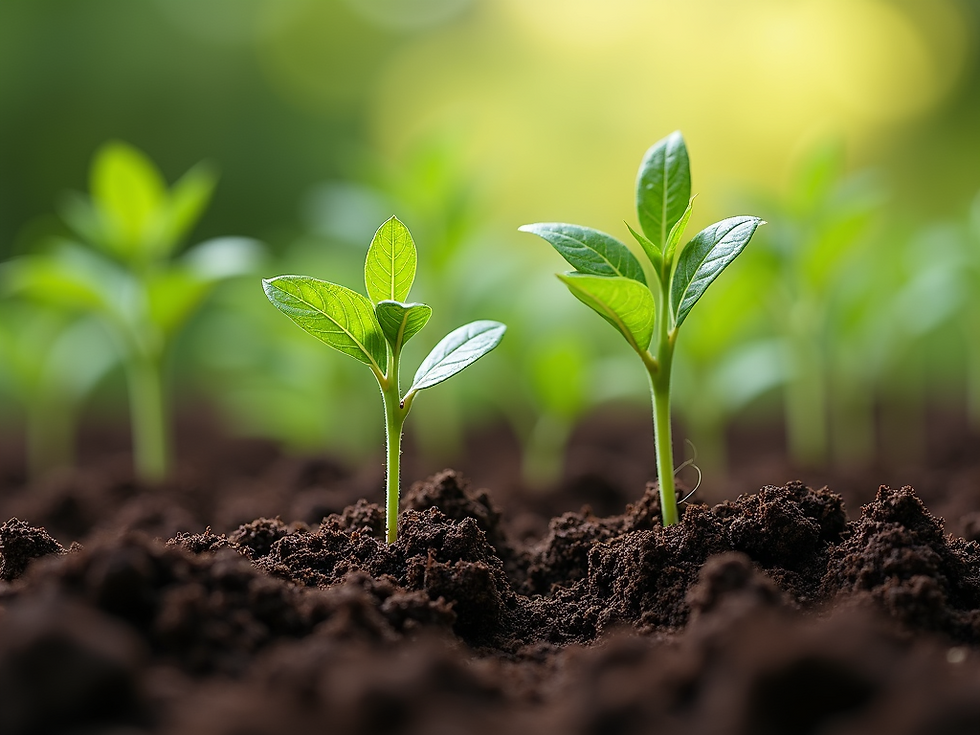Crop Change: The Best Moment to Apply a Microbial Biostimulant
- Marco Breekweg

- Nov 10
- 3 min read
Updated: 4 days ago

Crop change marks the start of a new production cycle. Systems are cleaned, substrates are replaced, and the greenhouse gets ready for planting. But while most growers focus on hygiene and equipment, the microbiology often gets overlooked.
New substrate means almost no living microbiome
When starting on fresh coco, peat, rockwool, or any inert mix, there is almost no living microbiome present. The first weeks decide which microorganisms will dominate the root zone. Without a healthy microbial community, nutrient availability stays low and root development is slower. By applying a microbial biostimulant during crop change, growers enable beneficial bacteria to colonize the substrate early and secure a resilient microbial balance for the season ahead.
The role of microbial biostimulant Biomicrobes 08
Biomicrobes 08 is a microbial biostimulant based on carefully selected Bacillus strains that complement each other in the root environment. These beneficial bacteria support natural soil and root processes such as:
mineralization of organic residues;
mobilization of phosphorus and micronutrients;
stimulation of root growth and nutrient uptake through natural metabolites.
The product is OMRI Listed for use in organic production in the U.S. and Canada and is also included on the Dutch Input List.
Why apply during crop change and throughout the season
From the first day of planting, it’s important to let beneficial microbes colonize the root zone. This gives unwanted microorganisms less opportunity to establish themselves. The Bacillus strains in Biomicrobes 08 form a stable biofilm of beneficial organisms around the roots, creating a resilient microbiome that stays active throughout the season and keeps the biological balance in favor of the crop.
Early colonization of the substrate beneficial bacteria quickly occupy available surfaces and create a stable microbiome.
Active roots all season long regular applications maintain a healthy biological balance.
Improved nutrient efficiency microbes help release nutrients and keep them available for uptake.
Stronger root growth an active microbial community supports consistent plant performance under variable conditions.
Application
At planting: Apply 8 L Biomicrobes 08 per hectare (or 3.2 L per acre) via irrigation, or 100 mL per 1,000 L nutrient solution.
During the crop: Repeat weekly or biweekly depending on crop duration and drain volume.
Compatibility: Compatible with standard fertilizers; avoid simultaneous use with strong oxidizing agents.
Result
Growers who integrate microbial biostimulants like Biomicrobes 08 see more active root systems, steadier crop growth, and reduced stress during environmental fluctuations and crop transitions.
Conclusion
A crop change isn’t just a reset, it’s the best moment to steer biology in the right direction. A new substrate with almost no living microbiome is an empty canvas. The microbes that establish first will determine the balance for the rest of the season.
Biomicrobes 08 helps build and maintain that balance from the start and throughout the crop cycle, for a vital root environment and consistent, productive growth.
FAQ
What is a microbial biostimulant?What is a microbial biostimulant?
A microbial biostimulant contains beneficial bacteria, such as Bacillus strains, that support root development, nutrient availability and overall microbiome stability. They do not replace fertilizers but enhance natural biological processes in the root zone.
Why apply a microbial biostimulant during crop change?
During crop change, the substrate contains almost no living microbiome. Applying a microbial biostimulant at this moment allows beneficial bacteria to colonize first, securing a stable and resilient root microbiome for the entire season.
What benefits does Biomicrobes 08 provide after crop change?
Biomicrobes 08 improves early substrate colonization, increases nutrient efficiency, strengthens root growth, and helps maintain a stable biological balance throughout the crop cycle. This results in more uniform growth and better stress tolerance.





Comments